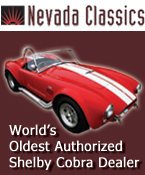
06-20-2016, 08:26 AM
|
|
CC Member

|
|
|
Join Date: Feb 2008
Location: Keller,
TX
Cobra Make, Engine: Factory Five MK3, 351W
Posts: 9
|
|

 Not Ranked
Not Ranked
 Body Work Instruction For Beginners?
Body Work Instruction For Beginners?
I was wondering if anyone had any suggestions for tutorials or videos for absolute beginners doing body work.
I have a MK3 Factory Five Roadster that is still very rough. I would like to do all the work myself, to make the car truly start to finish, even if the final product is not as good as a professional job.
Does anyone have any suggestions on basics for doing body work of this kind?
Thanks!
|


